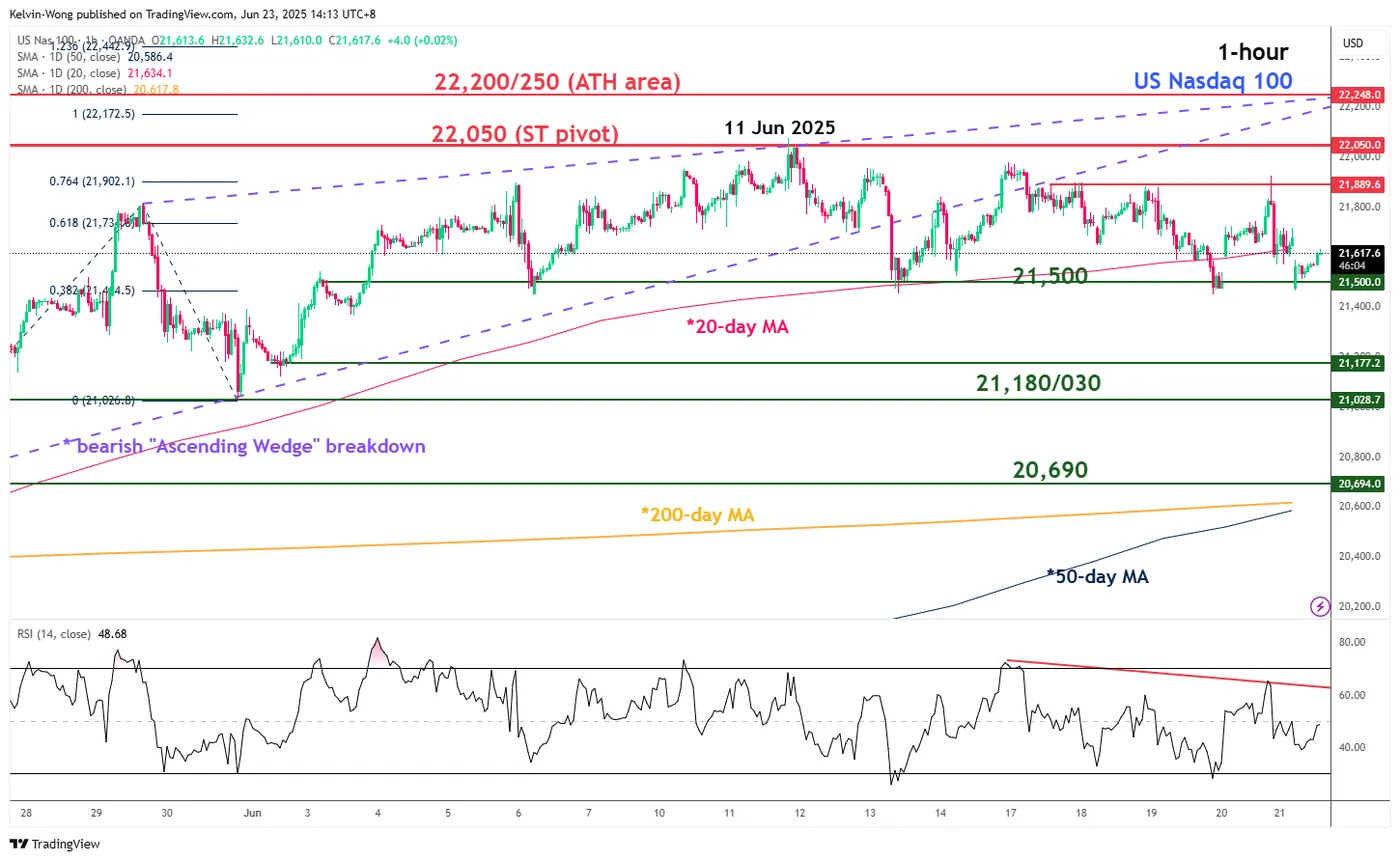Risk-off sentiment returned in today’s Asian session following a renewed spike in geopolitical risk premiums. This was driven by US President Trump’s reversal over the weekend, abandoning his earlier “two-week grace period” and authorizing airstrikes on three Iranian nuclear enrichment facilities.
US Futures Extended Losses, with Asian equities, Except for Hang Seng Index
US stock index futures extended their post “Triple Witching” losses, with and down -0.3% and -0.4%, respectively, in mid-session trading.
Most Asian equity benchmarks also traded lower: Japan’s slipped -0.2%, and Singapore’s Straits Times Index declined -0.4%. Bucking the trend, Hong Kong’s Hang Seng Index rose 0.2%, likely supported by expectations of further stimulus announcements at China’s four-day National People’s Congress Standing Committee meeting, which begins Tuesday, 24 June.
Aussie, Kiwi, and Japanese Yen Are the Worst Performers Against the US Dollar
The strengthened modestly in response to the airstrikes, with the up 0.3% intraday. High-beta currencies such as the and New Zealand dollars, which typically weaken during equity market sell-offs, underperformed. The climbed 0.7%, while AUD/USD and fell by 0.7%.
WTI Trimmed Its Early Intraday Gain of 4.1% but Is Still Holding Above Key Support
pared back an early 4.1% gap-up rally to trade up 0.7% at US$75.86/barrel, holding above gap support at US$75.40. Gold (), after an early gain of 0.6%, reversed to a -0.6% intraday loss, once again testing its 20-day moving average support at US$3,350, a key technical level since 21 May.
Economic Data Releases
Fig 1: Key data for today’s Asia mid-session (Source: MarketPulse)
Chart of the Day – Nasdaq 100 Continues to Probe the 21,500 Downside Trigger
Fig 2: US Nasdaq 100 CFD Index minor trend as of 23 June 2025 (Source: TradingView)
The US CFD Index (a proxy of the Nasdaq 100 E-mini futures) has staged a gap-down decline of -1% in today’s Asian opening session before it pared back its intraday losses to -0.3% at this time of writing.
The current intraday rebound on the US Nasdaq 100 has occurred for the third time right at the 21,500 key near-term support, now a likely downside trigger level for the bears.
Overall, the short-term technical structure is skewing towards a bearish bias as price actions of the US Nasdaq 100 CFD Index have traded below its 20-day moving average, and the hourly RSI momentum indicator remains below a parallel descending resistance at around the 62 level.
Watch the 22,050 key pivotal resistance, and a break below 21,500 may kickstart of minor downtrend phase in the first step, exposing the next intermediate support zone at 21,180/21,030 (see Fig 2).
On the flip side, a clearance above 22,050 invalidates the bearish scenario for a retest on its current all-time area of 22,200/22,250.
